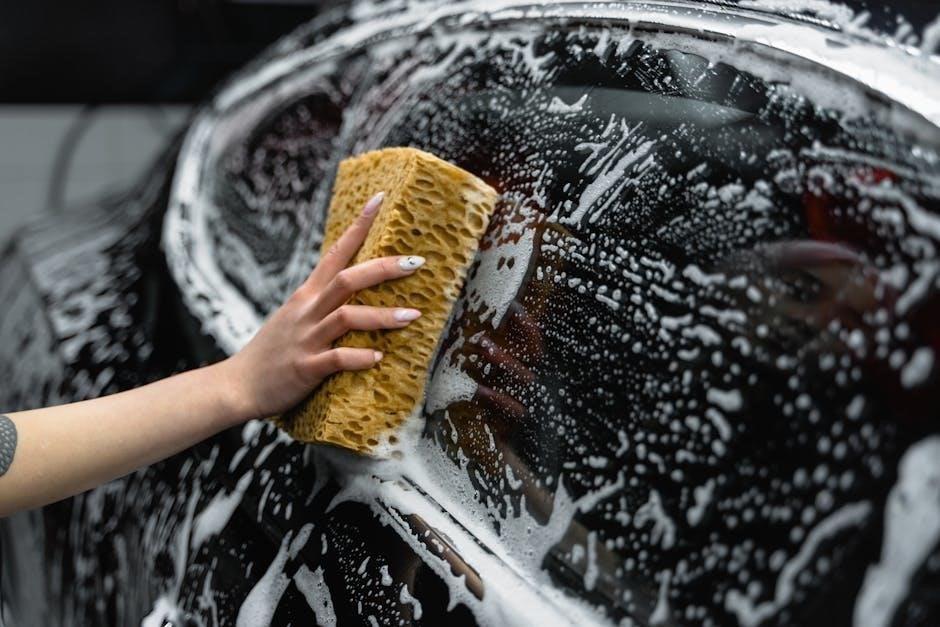The manual Outback provides a unique driving experience with its six-speed transmission, offering a more engaging drive, and is featured across various models, including the 2.5i, with a focus on performance and control always available.
History of Subaru Outback and Manual Transmissions
The Subaru Outback has a rich history, with its introduction dating back to the 1990s, and over the years, it has undergone significant changes, including the availability of manual transmissions. The early models of the Outback were offered with a manual option, providing a more engaging driving experience. As the market shifted towards automatic transmissions, Subaru gradually phased out the manual option in some of its models. However, the manual transmission remained a popular choice among driving enthusiasts, and Subaru continued to offer it in various trim levels. The history of the Subaru Outback and manual transmissions is a story of evolution, with the company adapting to changing market trends while still catering to the needs of its loyal customer base. The manual transmission has played a significant role in the Outback’s history, and its availability has been a major factor in the vehicle’s popularity. With its unique blend of performance and control, the manual Outback has become a favorite among driving enthusiasts. The company’s decision to continue offering manual transmissions in its Outback models has been well-received by fans of the vehicle.
Fluctuation of Manual Transmission Availability
The availability of manual transmissions in the Subaru Outback has fluctuated over the years, with the company offering it in some models and phasing it out in others. This fluctuation has been influenced by market trends, with the demand for automatic transmissions increasing in recent years. Despite this, Subaru has continued to offer manual transmissions in certain trim levels, catering to the needs of driving enthusiasts. The company’s decision to limit the availability of manual transmissions has been seen as a response to changing market conditions. However, the manual transmission remains a popular option among fans of the Outback, and its availability is often seen as a major selling point. The fluctuation in manual transmission availability has also been influenced by the introduction of new technologies, such as continuously variable transmissions. Overall, the availability of manual transmissions in the Subaru Outback has been a subject of interest among car enthusiasts, with many welcoming the company’s decision to continue offering this option. The manual transmission has become an integral part of the Outback’s identity.

Transmission Types and AWD Systems
Various transmission types, including manual and automatic, are paired with all-wheel drive systems, enhancing vehicle performance and control always available online now.

Types of Symmetrical All-Wheel Drive
There are several types of symmetrical all-wheel drive systems featured across the Outback line, including a viscous-coupling locking center differential and an electronically managed continuously variable transfer clutch. The viscous-coupling locking center differential is used in 2.5i models with a six-speed manual transmission, distributing power 50:50 front to rear. This system provides a high level of traction and control, making it ideal for driving in challenging conditions. The electronically managed continuously variable transfer clutch, on the other hand, is used in Outback 2.5i models with a continuously variable transmission, providing a smooth and seamless transfer of power between the front and rear wheels. These systems work together to provide a high level of performance and control, making the Outback a popular choice for drivers who need a vehicle that can handle a variety of driving conditions. The systems are designed to work in conjunction with the manual transmission, providing a unique driving experience.
Electronic Management of AWD Systems
The electronic management of all-wheel drive systems in the Outback is a complex process that involves the use of advanced sensors and computer systems to control the distribution of power between the front and rear wheels. This system uses a variety of inputs, including wheel speed, throttle position, and steering angle, to determine the optimal distribution of power. The system is designed to provide a high level of traction and control, and can adjust the distribution of power in real-time to respond to changing driving conditions. The electronic management system is also able to learn the driver’s habits and adjust the distribution of power accordingly, providing a more personalized driving experience. The system is highly advanced and provides a high level of performance and control, making it an essential component of the Outback’s all-wheel drive system. The use of electronic management allows for seamless and smooth operation of the system.

Design and Compatibility of Manual Transmissions
Manual transmissions are designed with compatibility in mind, featuring a low first gear ratio, making them desirable and versatile always in various driving conditions and situations with ease and control available.
Similarity in Design to Older Models
The manual transmission in the Outback is similar in design to the six-speed transmission found in the 2010-2014 models, featuring a low first gear ratio and compatibility with older Subaru platforms. This design similarity allows for easier maintenance and repair, as well as the ability to swap parts between models. The transmission’s design also takes into account the need for a smooth and quiet ride, making it an ideal choice for drivers who want a comfortable and engaging driving experience. Additionally, the similarity in design to older models means that drivers who are familiar with the older transmissions will have an easy time adjusting to the new one. The transmission’s durability and reliability are also notable, making it a great choice for drivers who want a hassle-free ownership experience. Overall, the manual transmission in the Outback is a great option for drivers who want a fun and engaging driving experience.
Compatibility with Older Subaru Platforms
The manual transmission in the Outback is compatible with older Subaru platforms, such as the 3rd generation Outback, which was produced from 2005 to 2009. This compatibility is due to the transmission’s design, which allows it to be easily swapped with older models. The transmission’s low first gear ratio and durable construction make it an ideal choice for drivers who want to upgrade their older Subaru models. The compatibility with older platforms also means that drivers can easily find replacement parts and accessories, making maintenance and repair easier and more cost-effective. Furthermore, the transmission’s compatibility with older models allows drivers to retain the value of their older Subarus, making it a great option for those who want to keep their vehicles running smoothly for years to come. Overall, the manual transmission’s compatibility with older Subaru platforms is a significant advantage for drivers who want to upgrade or maintain their older vehicles.

Current Models with Manual Transmission
Current models include the Impreza, WRX, and BRZ, offering engaging driving experiences with manual transmission options always available in these vehicles.
2024 Subaru Models with Manual Transmission
The 2024 Subaru models with manual transmission include the Impreza, WRX, and BRZ, which offer a unique driving experience. These models are designed to provide a more engaging drive, with a focus on performance and control. The manual transmission is standard equipment in some of these models, while the automatic is an optional upgrade. The Impreza and WRX are popular choices for those who want a manual transmission, and they are available in various trim levels. The BRZ is a sports car that is designed for driving enthusiasts, and it comes with a manual transmission as standard. The 2024 Subaru models with manual transmission are a great choice for those who want a more engaging driving experience. They offer a range of benefits, including better fuel economy and a more connected driving feel. Overall, the 2024 Subaru models with manual transmission are a great option for those who want a fun and engaging drive.
Standard Equipment and Upgrades
The manual transmission is standard equipment in some Subaru models, while the automatic is an optional upgrade. The cost of upgrading to an automatic transmission can vary, but it is typically around $1,500. Some models may also offer additional upgrades, such as a performance package or a luxury package, which can include features like heated seats and a premium sound system. The standard equipment for manual transmission models typically includes a six-speed transmission, a viscous-coupling locking center differential, and a range of other features designed to enhance the driving experience. The upgrades available can vary depending on the model and trim level, but they are designed to provide additional comfort, convenience, and performance. Overall, the standard equipment and upgrades for manual transmission models are designed to provide a unique and engaging driving experience. The upgrades can add significant value to the vehicle, and they are a key consideration for anyone purchasing a manual transmission model.